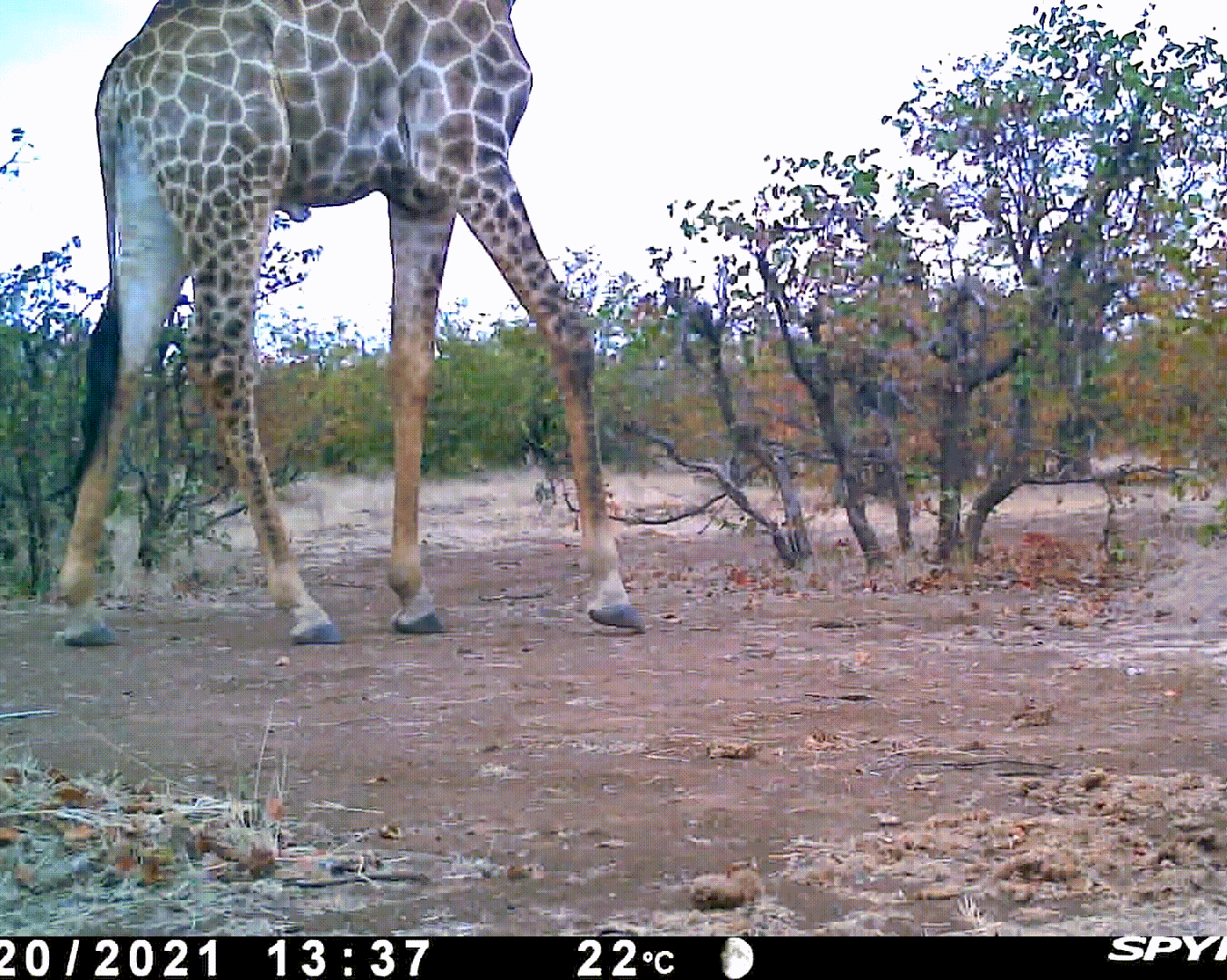
Monica Lasky
Ecology, Animal Behavior, and Conservation

Fearing Giants
This project focuses on simulating the presence of megaherbivores (African bush elephants, black rhinoceros, and common hippopotamus) to identify what drives the ‘landscape of fear’ they create for smaller, mid-sized herbivores.

Attraction and avoidance
Using camera trap data, I am investigating whether dominant megaherbivores drive spatiotemporal behavior of smaller, subordinate herbivores on the savanna.

Do giraffes change flowers?
Giraffes, being the tallest living terrestrial animal on earth, can uniquely influence flowering rates on tall trees. I am examining how giraffes may alter the flower abundance and presence on one of the most common savanna tree species, the knob thorn.

Elephants in the US
Animals do not only impact their natural environments, but are also having drastic impacts on novel landscapes. I am looking into how elephants housed in North American sanctuaries impact vegetation structure and primary productivity of local habitats.

African animals fear humans
How humans cause fear in wildlife, and how this fear compares to the fear they show towards native predators.

Mast and Mammals
Camera trap study analyzing species presence and abundance across the United States - from the swamps of Florida to the mountains of Yellowstone.

Candid Critters
Statewide citizen science wildlife survey studying species populations across North Carolina.

The Great Python Invasion
Tracking Burmese pythons across the Greater Everglades Ecosystem to understand the species' movement patterns and behavior.

Tortoise Tastes
Food preferences of gopher tortoises at various levels of habitat management in Barefoot Beach Preserve, Southern Florida.

Zoo Elephant Management
I worked with the North Carolina Zoo to identify management practices that promoted behavioral welfare of their African elephants .
Terrestrial megaherbivores represent a diverse group of herbivorous mammals weighing over 1,000 kg. Unfortunately, less than 20% of megaherbivores from the Pleistocene Epoch remain today, and with their loss comes the loss of the crucial ecosystem services they provide. My research aims to illuminate the influence that the few remaining megaherbivores exhort on ecological communities.